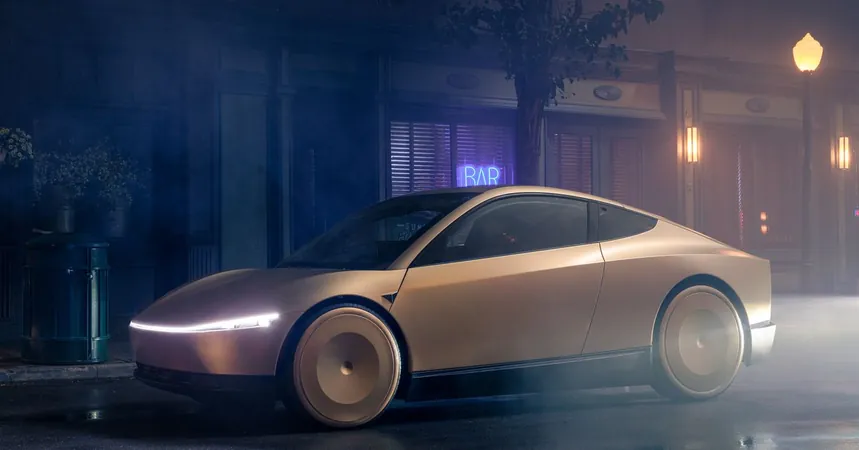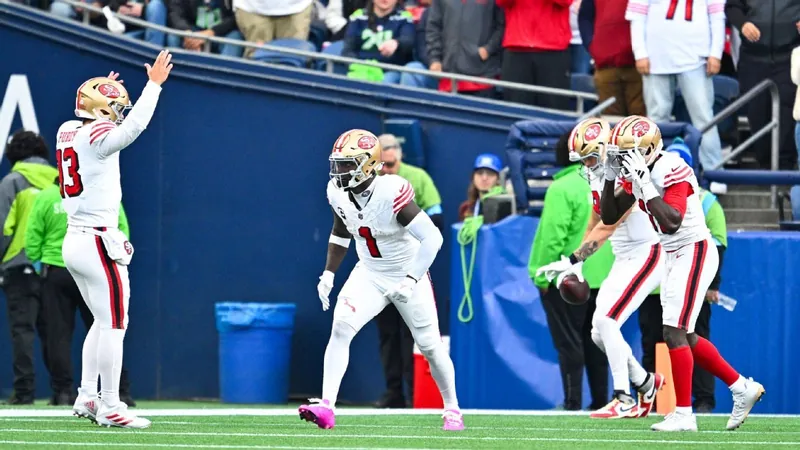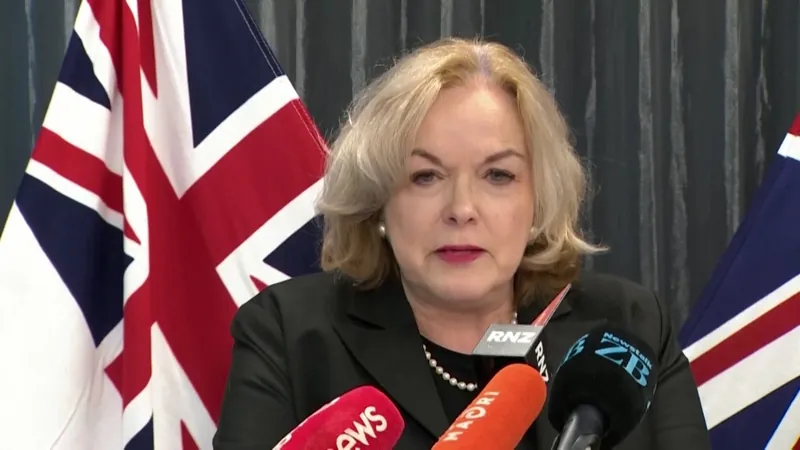
Tesla's Revolutionary Cybercab: The Future of Robotaxis is Here!
2024-10-11
Author: Chun
Tesla's Revolutionary Cybercab
Tesla CEO Elon Musk has officially unveiled the long-awaited Cybercab, a revolutionary electric vehicle purpose-built for self-driving. This groundbreaking announcement comes after years of anticipation, false promises, and numerous deadline extensions, leaving many to wonder if this is finally the milestone Tesla fans have been waiting for.
Design and Features
The Cybercab’s design breaks away from conventional vehicle layouts, boasting no steering wheel or pedals to accommodate fully autonomous driving. With its futuristic aesthetics—complete with butterfly wing doors and a cozy interior designed for two passengers—it’s a glimpse into the future of transport. Instead of traditional charging methods, the vehicle uses innovative inductive charging for power, allowing for a wireless recharge while parked.
Safety and Cost Efficiency
Musk is confident that these autonomous vehicles could prove to be significantly safer than their human-driven counterparts. He suggests that Cybercabs may operate at a cost as low as $0.20 per mile, making them a potentially cheaper alternative to city buses, which currently average around $1 per mile.
Initial Launch Plans
Targeting Texas and California for the initial launch of fully autonomous driving in 2024, Tesla is eyeing production of the Cybercab by 2026, though Musk acknowledged the possibility of a later release in 2027. In addition to the Cybercab, Tesla is also developing a general-purpose robot, named Optimus, which could cost between $20,000 and $30,000 and is designed to perform a multitude of tasks.
Event Highlights
During the unveiling at Tesla's 'We, Robot' event on the Warner Bros. film lot in Burbank, California, Musk enthusiastically stated, 'This is a very big deal. It’ll save lives—many lives—and prevent injuries.' However, the road to full autonomy is riddled with challenges.
Skepticism and Challenges
Despite Musk's ambitions for the Cybercab, skepticism surrounds Tesla's approach to autonomous technology. Industry experts continually raise concerns about the effectiveness of Tesla's current driver-assist features, Autopilot and Full Self-Driving (FSD), which are marketed aggressively yet remain under heavy scrutiny. Serious incidents have occurred, including fatal accidents involving Tesla vehicles under the influence of these systems.
Future Vision and User Experience
Musk acknowledged the road ahead is complex, pointing out the potential time savings for users. 'Think about the cumulative time that people spend in a car,' he remarked, envisioning that users could reclaim time for leisure activities such as reading, watching movies, or working while commuting.
Competition and Regulatory Issues
However, compared to competitors like Waymo and Cruise—who have accumulated millions of miles of real-world testing—Tesla seems to be facing an uphill battle. Concerns about safety and regulatory compliance are paramount, as government regulators intensify investigations into the overall safety of this emerging technology.
Legal and Leadership Challenges
Furthermore, recent lawsuits against Tesla from families affected by crashes linked to Autopilot highlight the perilous nature of their technology. Additionally, Musk's controversial leadership at X (formerly Twitter) has sparked dissent among some of Tesla’s core customer base, adding another layer of complexity to the company's trajectory.
Conclusion
As we stand on the brink of what could be a transportation revolution, the question remains: Will the Tesla Cybercab live up to the hype, or is it yet another fantastical promise from the notorious visionary, Elon Musk? One thing is certain: the world is watching as Tesla navigates this pivotal moment in automotive history.





 Brasil (PT)
Brasil (PT)
 Canada (EN)
Canada (EN)
 Chile (ES)
Chile (ES)
 España (ES)
España (ES)
 France (FR)
France (FR)
 Hong Kong (EN)
Hong Kong (EN)
 Italia (IT)
Italia (IT)
 日本 (JA)
日本 (JA)
 Magyarország (HU)
Magyarország (HU)
 Norge (NO)
Norge (NO)
 Polska (PL)
Polska (PL)
 Schweiz (DE)
Schweiz (DE)
 Singapore (EN)
Singapore (EN)
 Sverige (SV)
Sverige (SV)
 Suomi (FI)
Suomi (FI)
 Türkiye (TR)
Türkiye (TR)